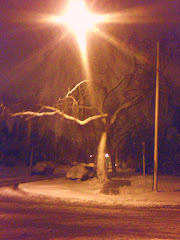If one of the great projects of political modernism was nation-building, including building empires, one of the great projects of postmodernism, in which the literary, artistic, and political are conterminous, is fragmentation. The sun has set on the British Empire, and the French and the Belgian and the Dutch Empires. The nations of Africa and Asia are politically independent of the West. Their artists and writers no longer reflect on the glory of those empires, but write about their own experiences, about their experiences as subjects – of an empire, of a newly-formed country, as a woman in a male-dominated culture, as an artist trying to find their way in the world, etc. Their audience is not exclusively those of us in the West anymore. They write and make art for themselves, for their own country, for their own historical moment. This is partly why the postmodern is considered fragmentary—because we recognize our subjectivity as different depending on which group we are a part of at the moment. The opposite of fragmentary is unitary—and modern: assuming a unitary self that assumes its place in a unitary empire under a united flag.
Many of the early avant-gardes were accused of co-opting African and Asian styles of art, but many of those movements were also anti-colonialist. While the most “modern” avant-garde was Futurism, which did glorify war and fascism, which did glorify the Italian state, others, such as Surrealism, were actively involved in the politics of the day. The Surrealists supported the Rift War for Moroccan independence and Andre Breton was present in Haiti as revolution broke out in the 1960s, a revolution some say was in part spurred by surrealism and his presence in Haiti at that time. Diego Rivera and Frida Kahlo who were considered Surrealists were involved with revolutionary politics in Mexico, an anti-colonial, if still nation-building project, straddling the line between modern and post-modern politics.
The first postmodern art movement was Dada, with its international cadre of artists, with its rejection of specific nationalities, and most of all, with its fragmentary styles of art, literature, and performances that at first confounded and incensed their audiences. Cabaret Voltaire itself was a mishmash of politics and art, most of it unintelligible to the art-sophisticated audiences of its day. Dada was already post-modern while aspects that we associate with literary modernism was still in its infancy, learning how to stand on wobbly legs and take a step. Dada, with its assault on all styles of writing, on very meaning itself, took on such quintessentially modern behemoths as Soviet style communism, with its empire, uniting the countries of northern Eurasia in the teens and twenties. Dadaist writers were distinguishable from modernists such as Joyce and Pound because there was not a search for new meaning but for no meaning, for circumventing meaning and therefore finding something outside of meaning, to communicate through bypassing conscious understanding altogether. Not that this was a feeling-based art form full of sentimentalism, either. So without feeling or language, what is left? DADA is left. That is why it is so misunderstood, why it is so easy to write about and so hard to practice and why its trajectory led straight into post-modern literature while other avant-gardes of the day were still experimenting and struggling with the modern. The Dadaist revolution was incomplete and there is still a project there that we can engage with as artists and writers moving through this postmodern world.
Surrealist Doodle

This was used as the cover of Karawane in 2006 and I have included it in on a number of bags and postcards over the years. Someone on the subway asked me if it was a Miro. I was very flattered!
Subscribe to:
Post Comments (Atom)








No comments:
Post a Comment